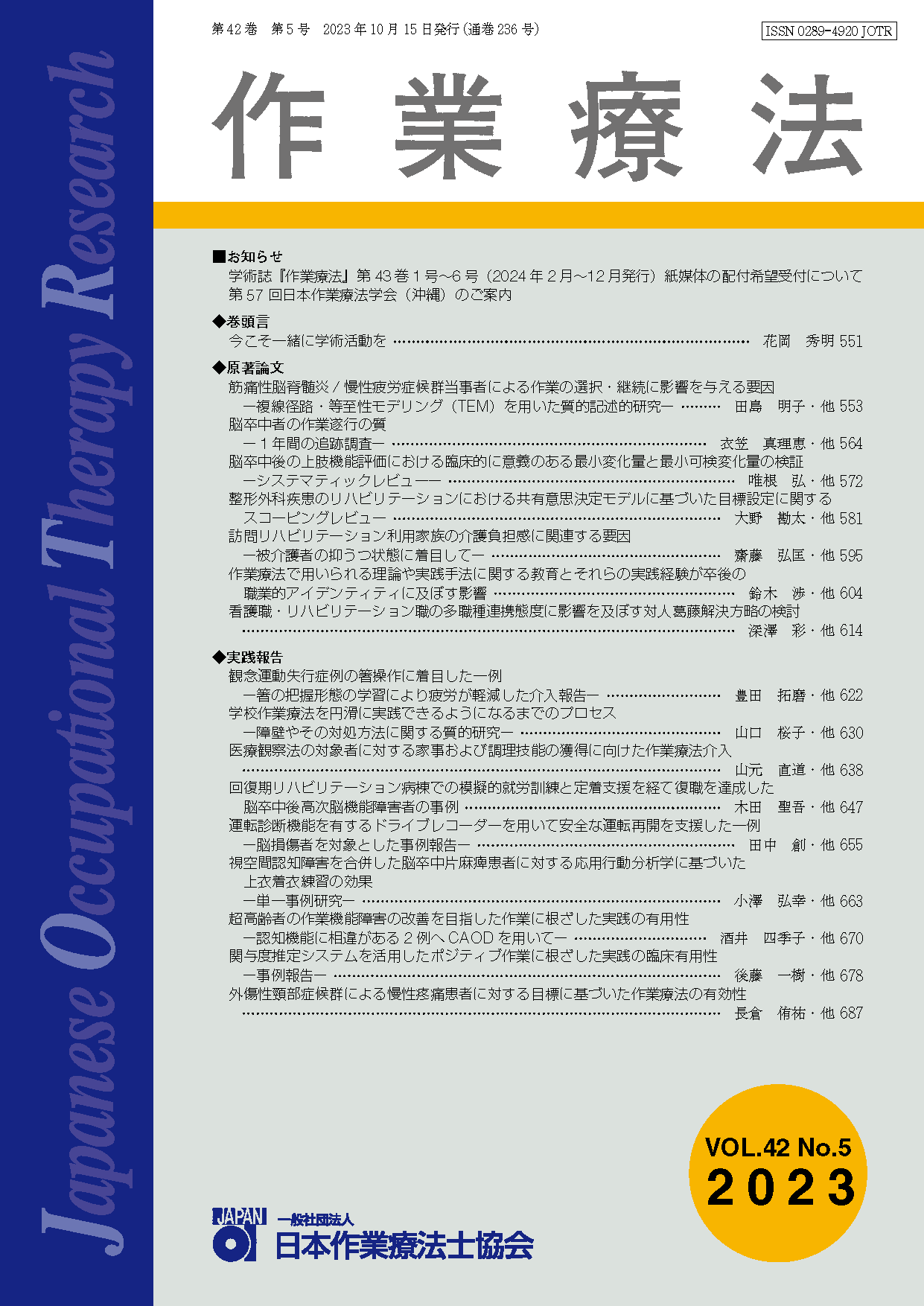Volume 42, Issue 5
Displaying 1-17 of 17 articles from this issue
- |<
- <
- 1
- >
- >|
FOREWORD
-
2023Volume 42Issue 5 Pages 551
Published: October 15, 2023
Released on J-STAGE: October 15, 2023
Download PDF (171K)
ORIGINAL ARTICLES
-
2023Volume 42Issue 5 Pages 553-563
Published: October 15, 2023
Released on J-STAGE: October 15, 2023
Download PDF (818K) -
2023Volume 42Issue 5 Pages 564-571
Published: October 15, 2023
Released on J-STAGE: October 15, 2023
Download PDF (510K) -
2023Volume 42Issue 5 Pages 572-580
Published: October 15, 2023
Released on J-STAGE: October 15, 2023
Download PDF (385K) -
2023Volume 42Issue 5 Pages 581-594
Published: October 15, 2023
Released on J-STAGE: October 15, 2023
Download PDF (723K) -
2023Volume 42Issue 5 Pages 595-603
Published: October 15, 2023
Released on J-STAGE: October 15, 2023
Download PDF (542K) -
2023Volume 42Issue 5 Pages 604-613
Published: October 15, 2023
Released on J-STAGE: October 15, 2023
Download PDF (621K) -
2023Volume 42Issue 5 Pages 614-621
Published: October 15, 2023
Released on J-STAGE: October 15, 2023
Download PDF (524K)
PRACTICAL REPORTS
-
2023Volume 42Issue 5 Pages 622-629
Published: October 15, 2023
Released on J-STAGE: October 15, 2023
Download PDF (863K) -
2023Volume 42Issue 5 Pages 630-637
Published: October 15, 2023
Released on J-STAGE: October 15, 2023
Download PDF (1169K) -
2023Volume 42Issue 5 Pages 638-646
Published: October 15, 2023
Released on J-STAGE: October 15, 2023
Download PDF (820K) -
2023Volume 42Issue 5 Pages 647-654
Published: October 15, 2023
Released on J-STAGE: October 15, 2023
Download PDF (449K) -
2023Volume 42Issue 5 Pages 655-662
Published: October 15, 2023
Released on J-STAGE: October 15, 2023
Download PDF (1299K) -
2023Volume 42Issue 5 Pages 663-669
Published: October 15, 2023
Released on J-STAGE: October 15, 2023
Download PDF (989K) -
2023Volume 42Issue 5 Pages 670-677
Published: October 15, 2023
Released on J-STAGE: October 15, 2023
Download PDF (603K) -
2023Volume 42Issue 5 Pages 678-686
Published: October 15, 2023
Released on J-STAGE: October 15, 2023
Download PDF (604K) -
2023Volume 42Issue 5 Pages 687-694
Published: October 15, 2023
Released on J-STAGE: October 15, 2023
Download PDF (512K)
- |<
- <
- 1
- >
- >|
